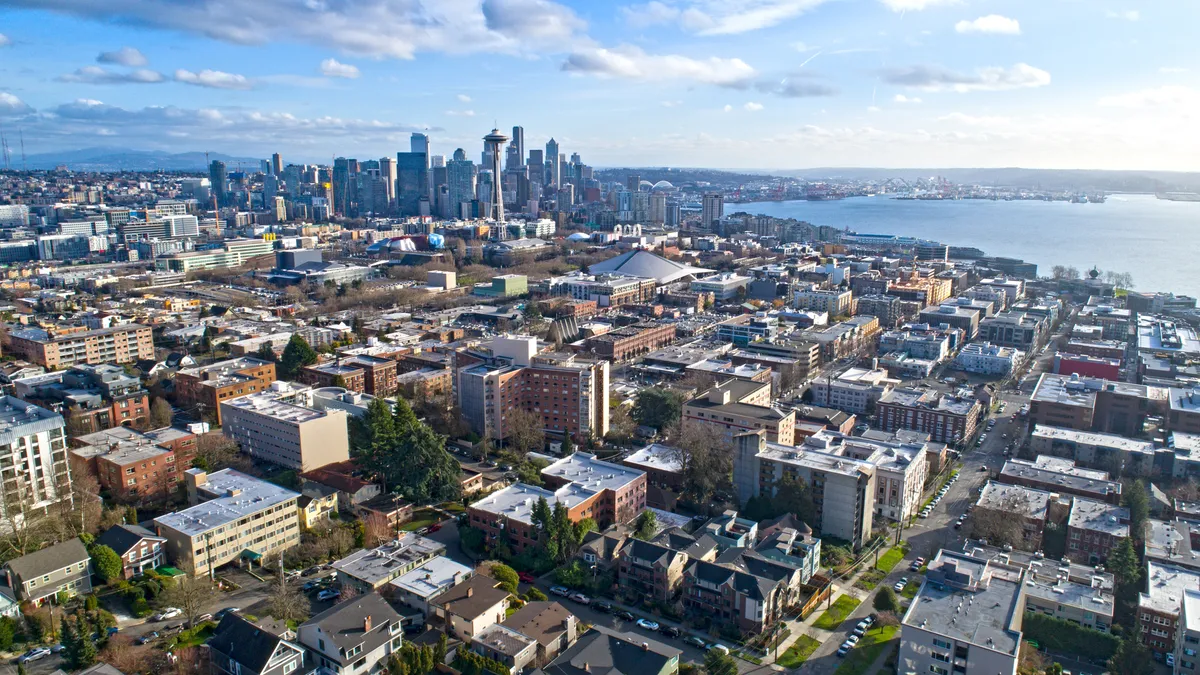Voters have approved three major transit expansions in the three decades in Seattle and the greater Puget Sound area to create what the regional transportation authority calls “the most ambitious transit expansion in the country.” Urban Institute researchers have looked into whether that transit expansion can help the region address another urgent problem, its housing shortage. A new interactive online tool they unveiled last week shows the potential impact of zoning changes on housing development efforts.
Like much of the United States, Seattle and its surrounding communities face a growing population that is outpacing housing supply. In 2021, the Puget Sound Regional Council reported that the region had a shortage of 46,000 homes and must add 810,000 new homes by 2050 to meet anticipated needs.
As light rail, bus rapid transit and commuter rail grow throughout the region, they create the opportunity for more residential construction near the transit corridors, the researchers suggest. But current zoning dampens housing development, they say.
“If you only build transit and don’t provide housing, that’s good for the people who currently live around the transit system but not great for the future,” said Yonah Freemark, senior research associate in the Urban Institute’s Metropolitan Housing and Communities Policy Center. Freemark co-authored a report that informed the development of the interactive tool.
The tool uses data on transit station and line location, housing units within a certain distance of stations, population characteristics, and existing zoning requirements to calculate estimates of the impact of four zoning changes cities could pursue to combat the housing shortage:
- “Plexify” changes are zoning modifications that would allow mid-density housing such as duplexes, triplexes or quadplexes to be built on lots currently zoned for single-family housing, thus increasing neighborhood density.
- “Missing middle” strategies would accommodate as many as 12 units — which could include commercial units — on lots currently zoned for fewer units.
- “Multiply” zoning changes would double the number of allowed housing units within a quarter-mile of transit stations.
- “Legalize” strategies allow large, multifamily residential construction in some commercial and business zones.
According to the modeling, “plexify” rules could lead to the construction of 13,906 more housing units in Kent, a city south of SeaTac airport, while “multiply” changes could result in 15,480 more units in that city. In Seattle, “plexify” changes could lead to 47,331 additional units, whereas “multiply” changes could dramatically increase housing supply by 204,646 new units.
“Different communities can create different zoning changes based on their specific needs,” Freemark said. “Not everyone needs a high-rise building, but everyone needs some accommodation for more housing.”
While the tool gives Puget Sound communities food for thought on zoning changes, a recently passed state law in Washington aims to jump-start the process by requiring most cities to allow duplexes and quadplexes in many of their neighborhoods.
City leaders in other areas of the country can use the research to engage with “the variety of different ideas that we present about how to make changes that can improve options for folks to have housing throughout their communities,” Freemark said.












